History of the city of Isfahan
Since ancient times, Isfahan has been considered one of the most important urban centers in the Iranian plateau. Therefore, many developments have occurred in this city throughout history, and this has caused this city to be referred to by different names in historical books. Of course, historians believe that before Islam, especially during the Sassanid era, this area was the center of gathering of sepahis, and for this reason, it was called Isfahan, which later became Isfahan.
Culture and customs of Isfahan
Isfahan's architecture, art, history and customs are rooted in authentic culture. The dialect of the people of Isfahan is Persian with Isfahani accent, and they do their daily and official conversations with this sweet accent. One of the most obvious features of the Esfahani accent is adding the letter S to the end of words. This letter is used instead of the verb "is" in sentences.
This city was chosen as the capital of Iran three times during Al Boyeh, Seljuk and Safavid periods, but the peak of Isfahan's prosperity dates back to the Safavid period. During this period, Shah Abbas moved the Safavid capital to this city and many historical buildings were built in this period. Nasser Khosrow, while passing through Isfahan, mentioned it as the best, most comprehensive and prosperous city in Iran.
Abrizan festival in Zayandehroud:
The ritual of Abrizan was performed in this way that on the 13th of July every year, the people of Isfahan gathered next to Zayandehrud. In this custom, women go to the top of the bridge to watch, and men in old clothes go into the water and sprinkle each other with water. It should be mentioned that Shah Abbas himself had a special interest in this celebration and celebrated it with many ceremonies
Arson and arson:
In some villages around Isfahan, on the nights of the 17th, 18th, and 19th of December, children gather in different groups and set fire to bushes, thorns, and firewood on the hills of Abadi, so that the flames spread throughout Abadi. The people of the village believe that when the light reaches the trees, their fertility will increase that year and pests will disappear. After the fires are extinguished and it gets dark, people return to ten and give a big tobra to one person to go to the doors of the houses as a group.
Economy of Isfahan
As we know, Isfahan province has a very good position economically. Because 7.8% of the country's mineral reserves are located in this province, and a large amount of reserves needed by the country are extracted from the mines of this province. Also, the products from numerous industrial factories located in Isfahan are considered as other economic poles of this province.
Parts of this province are made up of mountainous lands with a moderate climate, and this has led to the production of agricultural products such as cereals, legumes and fodder products, vegetables, summer vegetables, ornamental plants and fruits such as apples, pomegranates, etc. , produce grapes, almonds, pistachios, pears and apricots.
On the other hand, many tourists travel to Isfahan every year, and part of the economic cycle of this province will be provided by the presence of tourists and the sale of handicrafts.
Isfahan weather
Isfahan has a moderate and semi-arid climate. Some people recommend traveling to Isfahan in the month of May and consider this month as the paradise of Isfahan. You can experience cold winters and very hot summers in Isfahan. In the northern and eastern parts of this city, you can expect desert weather, and as we move towards the south of this city, the city's weather becomes cooler. In the summer, you can expect a temperature of 40 degrees in Isfahan.
The best time to travel to Isfahan
All seasons are suitable for traveling to Isfahan, but the best time to travel in terms of weather is from late March to late May and from late September to late October. Because at these times, the weather conditions are favorable and the temperature is around 20 to 25 degrees Celsius.
Of course, we cannot ignore the impact of different seasons in introducing Isfahan to travel to this city. We must say that no time is inappropriate to travel to the city of Isfahan, and every season you visit this beautiful city, you will experience a different and beautiful adventure. If you are looking to reduce the expenses of your trip to Isfahan, we recommend you to travel in the winter season. Traveling to this city in the winter season can be pleasant both for travelers from colder cities and for travelers from the south of the country. Also, if you are one of those people who want to see this city in the most secluded state possible during your trip to Isfahan, we recommend you to travel in the winter season.
Traveling in the autumn season also shows you a different face of Isfahan. Believe that walking in the passages covered with yellow autumn leaves next to Zayandehrud will be a memorable experience for you. In addition, you can also enjoy the cool weather in this season.
For many people, it is more attractive to plan a trip to Isfahan during the holiday season. This trip is probably considered a trip in the hearty heat of half the world. Of course, before the trip, we must say that Isfahan has very hot and dry weather in the summer season. However, summer travel can be enjoyable for some people who like the sun and heat.
Isfahan handicrafts that you should bring home with you
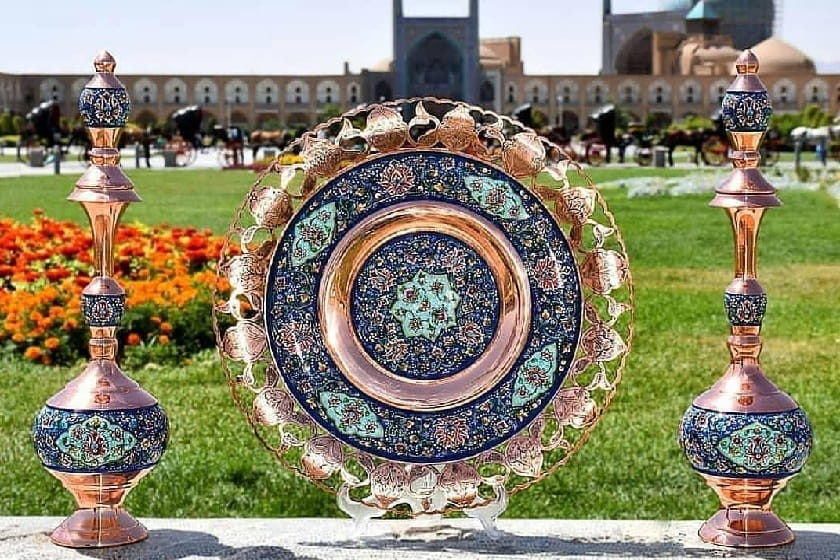
For many centuries, the handicrafts of Isfahan have been introduced as representatives of the authentic art of the Iranian people in the world and are considered one of the best souvenirs of this city.
Isfahan is half of the world and the cradle of arts and crafts in the center of Iran; A city whose people in the past centuries, with great creativity and intelligence, made the necessary tools of life with their hands and art. This city with a long history and having the most works of art, history, architecture and handicrafts is known as the largest producer of handicrafts in Iran, and its markets are full of Iranian and foreign travelers and tourists most of the year, who consider the handicrafts of this city as They buy souvenirs for their loved ones or for keepsakes.
Isfahan's handicrafts include fabric products, decorative dishes, paintings, chessboards, furniture, tables and chairs, etc., and you are free to choose souvenirs in this city. On your trip to this city, after visiting the sights of Isfahan, visit the bazaar and numerous stores in the city and immerse yourself in beautiful and stunning handicrafts such as inlaying, enameling, inlaying, coppersmithing, turquoise carving, calligraphy and hundreds of other products. Stay with us to introduce you to the most outstanding handicrafts of Isfahan.
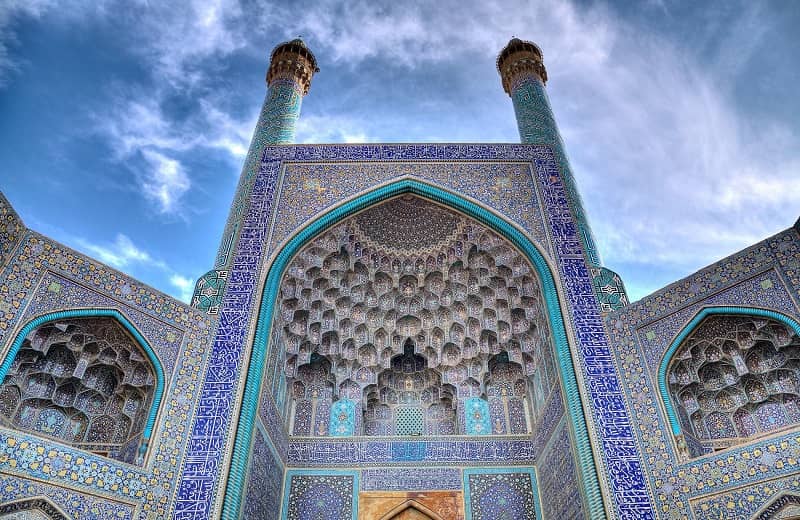
Khatam Kari
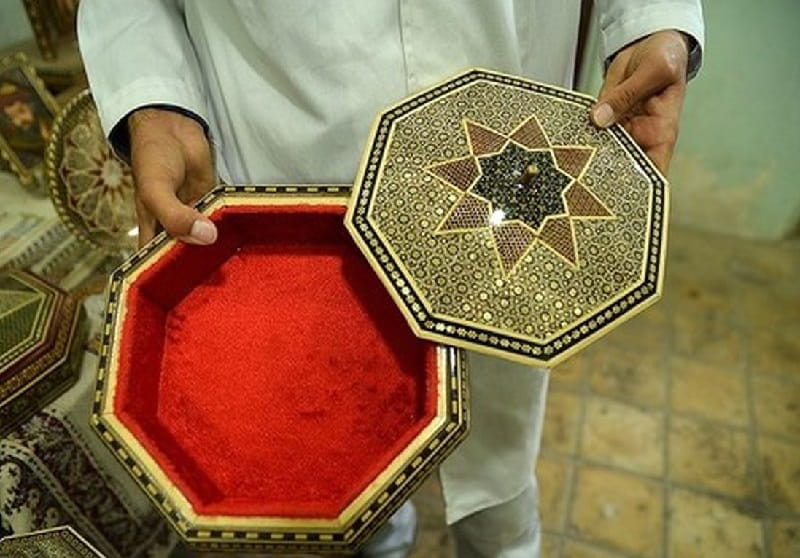
Khatamkari is one of the most original and exquisite handicrafts of Isfahan, dating back hundreds of years, and its peak of brilliance dates back to the reign of the Safavid kings. When the doors of the palaces, the Qur'an scrolls and the coffins of the tombs were decorated with this beautiful hand art. There is not enough information available about the original origin of Khatam Kari; But many narratives consider the origin of Khatam Kari to be Shiraz, and it is said that this art was transferred to Isfahan during the Safavid period and was mass produced in this city as a profession. In the Persian encyclopedia, it is said about Khatam Kari:
The time of the beginning of this art is not known and what is said about it is associated with legends. Some master sealers are still of the opinion that the art of seal making is the miracle of Prophet Abraham.








Inlaying is done on various objects in different designs and sizes. In Khatam Kari, first, the desired object is made of ebony wood, betel nut, walnut, juniper, juniper, maple, orange, kikum and boxwood (with different colors including black, brown range from dark to light, white, yellow, etc.). Some masters of inlay work also use camel, cow, horse, oyster, and elephant ivory.
In the next step, regular polygons with different number of sides (five, 6, seven, eight or 10 sides) are made from the mentioned woods and placed on the design with great precision and elegance. The glue used in Khatamkari is of hot or cold type, and depending on the opinion of the Khatamkar master, white glue or white glue is used. After placing these wooden polygons and gluing them, the obtained blade is tied with thread and this work continues until the design is complete. After finishing the work, the inlaid object is painted or oiled.
The stages of performing Khatam, whether on wood, bone or metal, are difficult and time-consuming, and include more than 400 steps from beginning to end. Khatam is used in the preparation of various products such as photo frames, cigarette boxes, canes, pipes, cosmetic boxes, key chains, stickers, and album covers. The quality of a good seal depends on the detail and regularity of the design. The most important centers of inlaying in Iran are Isfahan, Shiraz and Tehran.
Enamels
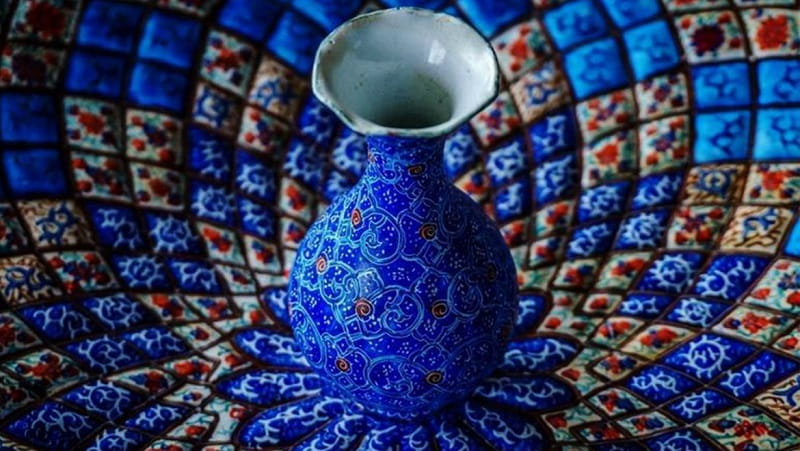
Minakari, Minagri or Minasazi is one of the most prominent and famous handicrafts of Isfahan, dating back more than five thousand years. Beautiful art that attracts the attention of every viewer with its blue, green and sometimes red color. Enameling is usually done on copper; But this art can also be applied to gold, silver and pottery. Minakari is a combination of fire and earth, which is mixed with the art of painting and creates amazing patterns. Enameling is done by two methods of housebanding (old method) and painting method.
In the enamel painting method, enamel patterns are formed on transparent glaze. For this purpose, after making the relevant object according to the desired design, the master enameller gives white glaze on it and repeats this work three or four times. Each time, this object is placed in a furnace with a heat of about 900 degrees Celsius to stabilize the glaze. Then they paint the object white and put it in the furnace again.
Minakari is one of the cheapest and most famous handicrafts of Isfahan, dating back more than five thousand years
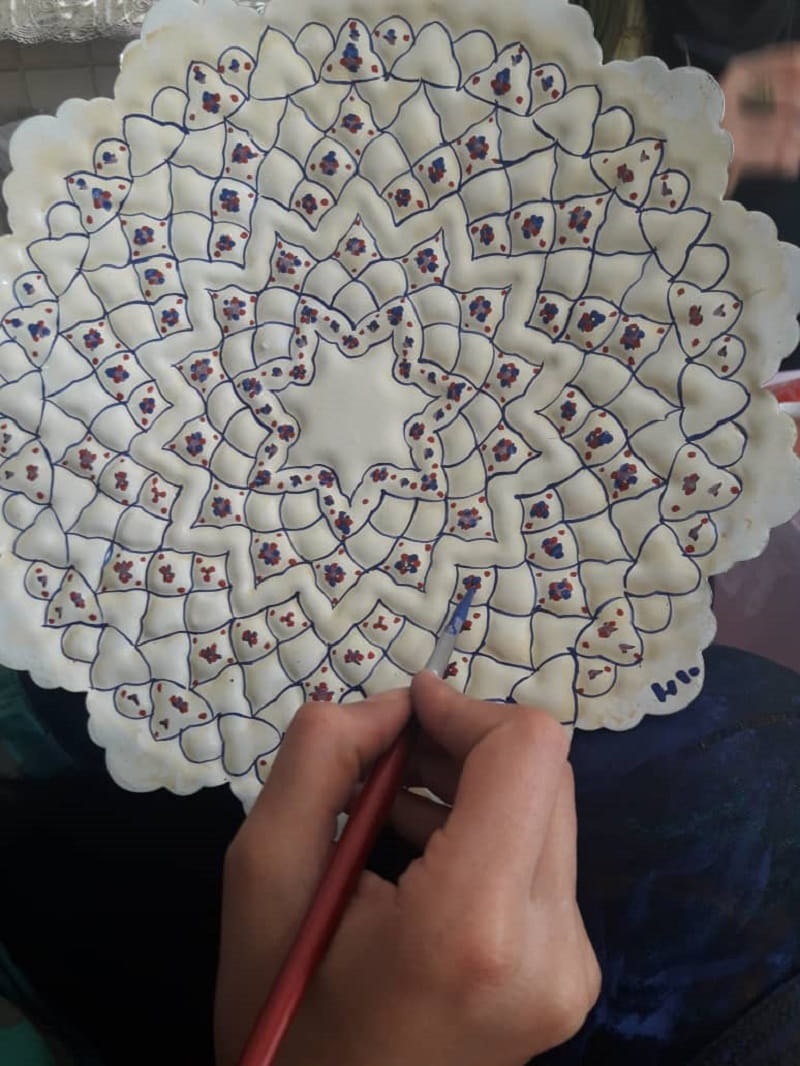
The history of enamel art in Iran dates back to the Achaemenid period and underwent great changes during the Sassanid period. The period which, according to many researchers of art history, is the peak period of the flourishing of enamel art. They believe that Byzantine (Eastern Roman Empire) and other foreign countries learned this art from Iranian Sasanian artists.
Iranian traditional designs and motifs are usually used in enamelware. Enameled copper and terracotta dishes are one of the cheap and best-selling handicrafts of Isfahan, and they have a lower price than other handicrafts of Isfahan. Earrings, necklaces, rings, large and small women's makeup boxes, cigarette boxes, enamel plates, enamel vases and large and small enamel paintings that are combined with other arts such as gilding and inlay work and miniatures are among the items that enamel makers sell in the market.
coppersmith
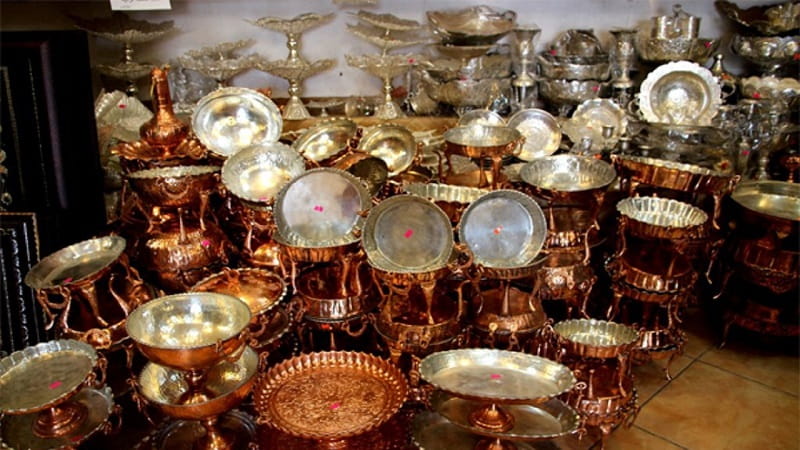
Coppersmithing is one of the old Iranian handicrafts dating back to five thousand years ago, and many handmade copper objects and dishes from the distant past can be seen in museums. It is said that the first metal discovered by humans was copper and the first metal workers were Iranians. Coppersmithing is popular in the cities of Isfahan, Zanjan, Kashan, Kerman and Shiraz, and in most of these cities there is a market called Coppersmiths' Bazaar. It is interesting to know that the discovery of two metal melting furnaces in the 3,000-year-old site of "Spidej" in Sistan and Baluchistan showed that the people of this region practiced the art of coppersmithing and metalworking thousands of years ago.
Coppersmithing has been noticed again in recent years by combining it with other Iranian arts. In the following, we will introduce you to two innovative coppersmithing arts.
copper and Khatam (finishing on copper)
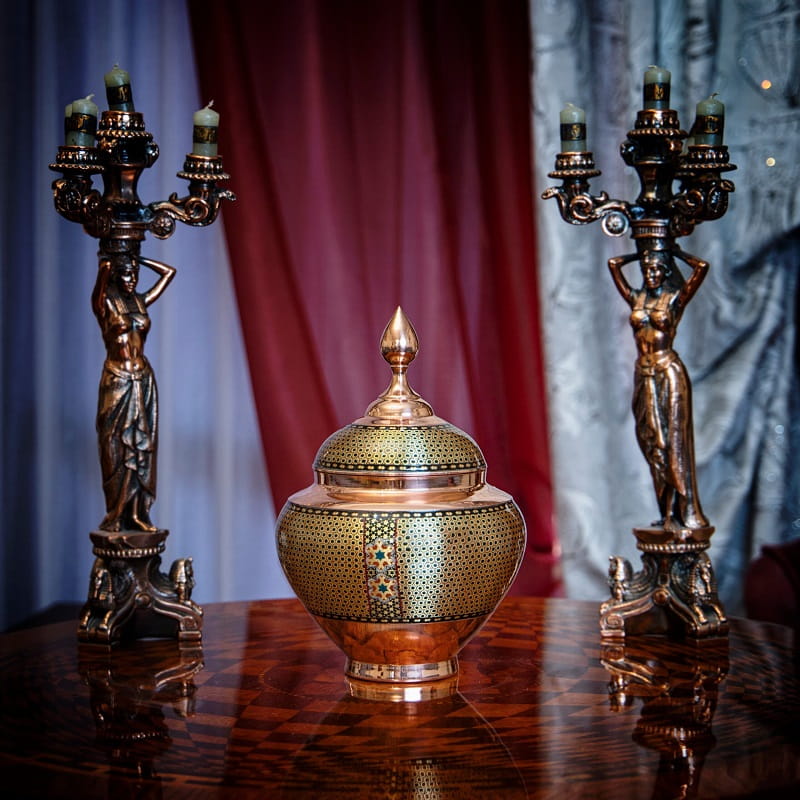
Copper and Khatam is one of the relatively new handicrafts of Isfahan, which was created by combining the art of coppersmithing and Khatam making. As we said earlier, wood and bone are used in inlay work and the entire surface of the desired object is filled with geometric patterns. For inlay work on copper, first the desired copper container is prepared by the master coppersmith and then parts of it are covered with inlay pieces.
Copper and Pardaz (Enameling on copper)




Coppersmithing is one of the new arts and crafts that have flourished in the past years by Isfahani's talented and creative artists. In this art, which is a combination of enameling and coppersmithing, the patterns of the enameller are designed on parts of the body of copper vessels. Then they polish the copper container and remove the existing bumps; Of course, so as not to damage its designs and motifs. Finally, the container is covered with polyester layers for further protection.
Ajil Khoori, Shirin Khoori, Kandan, Guldan, Sangab and copper candelabra and Pardaz, etc. are among the popular dishes that are sold in Isfahan. The artistic value of a copper dish is higher when the designs are more delicate and professional, and the surface of the dish is more polished.
Writing on copper and silver dishes
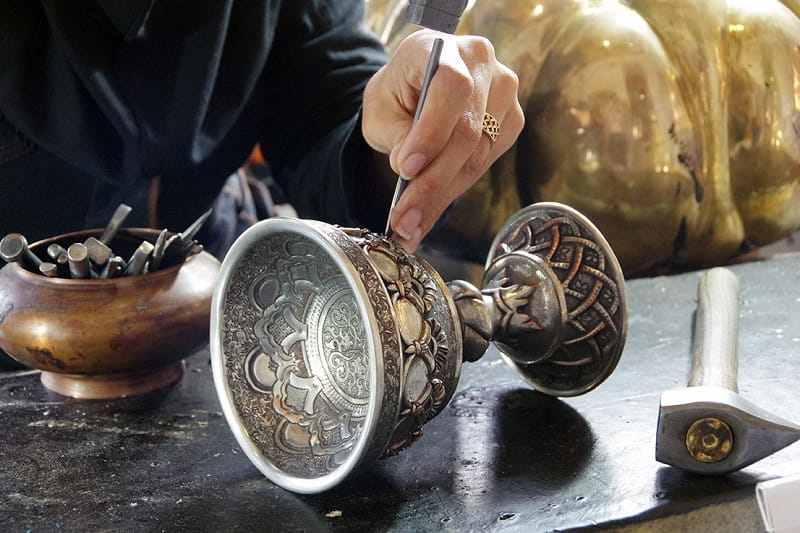
Pen painting is one of the most famous and oldest handicrafts of Isfahan, which is also flourishing in the cities of Shiraz and Tabriz and can be seen in blessed places and shrines of the great. Engraving is actually a kind of fine engraving on metals (copper, gold, silver and brass). The history of this art is attributed to the time of the Scythians or Scythians from the Aryan race.
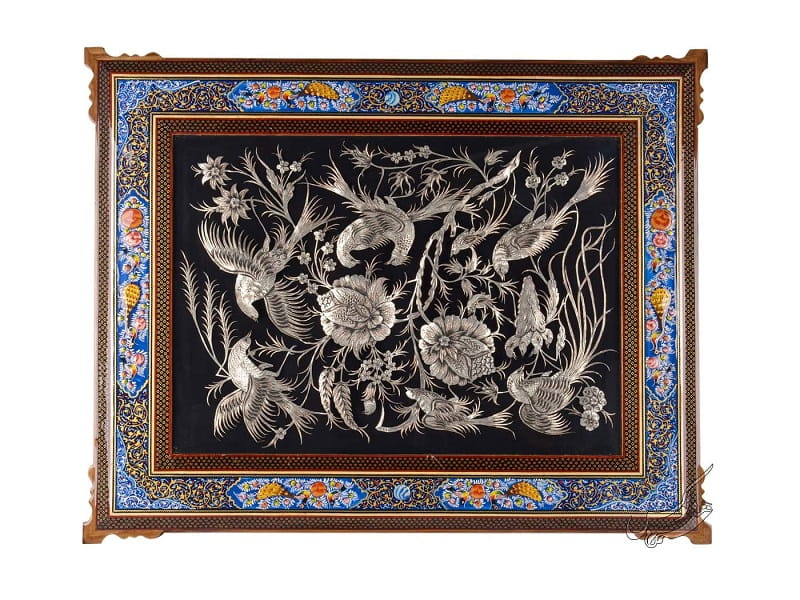
Today, for penning, firstly, inside or under the target container is filled with bitumen and plaster solution so that the noise of the pen is less heard during work and also the container is not punctured. Then, using tools such as special pens and hammers, the pen artist implements the desired design on the container and highlights and makes the details of the design three-dimensional. After creating the patterns, they separate the bitumen and pour coal dust on the grooves, and in the next step, they cover the surface of the container with black polishing oil. In this way, the written patterns are seen as dark and distinct lines.
portfolio making
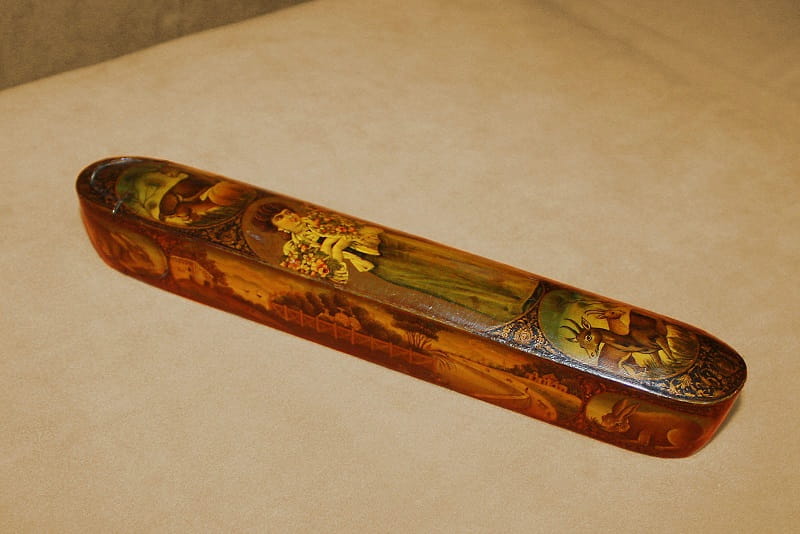
The word pencil case might remind you of a wooden pencil case decorated with the art of inlay, inlay, or miniature; But you should know that in the past, Qalamdan had a special place among kings, courtiers, writers and artists, and it was not made in the way it is today. The pencil case was originally made with cardboard and paper, and artists painted on it with different styles and designs.
In ancient Iran, there is no information about a body called Qalmadan; But this device was used in schools after Islam. Pens before the 9th century were either wooden or metal; Their wooden type was often simple or decorated with carvings, and their metal type was made of steel. Steel pencil cases inlaid with gilding and gems were aristocratic tools, and some of them were engraved with verses of the Quran or poems. In the Timurid period, decorative arts such as traditional binding, miniature making, calligraphy and gilding developed. In addition, at that time, kings, princes, and statesmen paid special attention to the art of calligraphy, and it was precisely during this Timurid period that the art of paperboard writing began.
Embossed cardboard pencil case received more attention from the end of the Safavid era and was used until the end of the Qajar era. The crude wallet had a wooden mold of its own shape and was made in two ways using cardboard pulp or paper pulp. After the pencil case was made, the painter would draw a painting on it, and after finishing the artistic details, a few hands would be drawn on the oil painting. In the future, they would give the pencil to Tadhib master to continue working on it.
The pencil case was originally made with cardboard and paper, and artists painted on it with different styles and designs.
tapestry
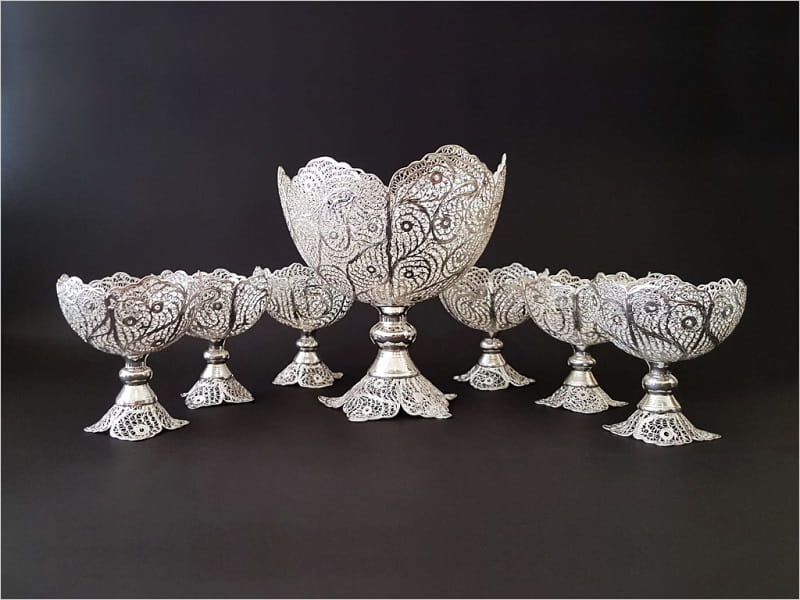
Tapestry making is one of the most valuable handicrafts of Isfahan and one of the most delicate metal industries in Iran. This art, which is used in making silver dishes and decorative items, is so delicate and beautiful that it is impossible not to attract your attention. Tapestry is obtained by putting together a large number of silver wires in the form of small patterns such as tears, leaves, ivy and buds.
The history of tapestry in Iran goes back hundreds of years. This art was prevalent in the city of Zanjan before the Pahlavi period; But during the reign of Reza Khan, with the migration of a number of masters in this field to Isfahan and Tehran, it flourished in other cities as well.
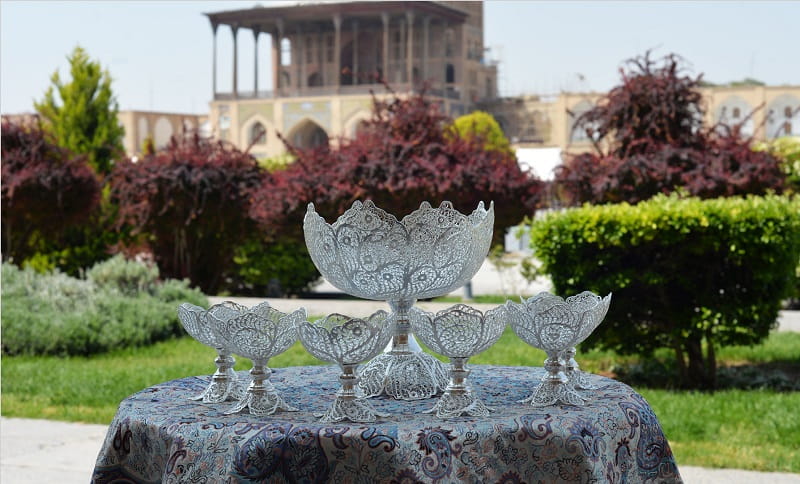
To prepare the tapestry strip, 100 carat silver is melted and made into wire. Then it is heated and passed through a special device to obtain a tapestry strip. Next, the desired mold is placed on a copper plate and its entire surface is coated with wax.
A strip wider than the tapestry strip is placed around the mold to take the shape of the mold and sink into the wax. The tapestry strips are carefully arranged in the mold according to the desired design, and then the entire surface of the mold is covered with Tenka powder (finishing the melting point of silver solder) and solder powder. The mold is placed in the furnace to melt the solder powder and connect the screws.
Kobe turquoise




Turquoise Kobi is considered one of the most important and valuable handicrafts of Isfahan and its history dates back to about 70 years ago. This precious art was initially done in Mashhad by an artisan on jewelry; But by reaching Isfahan, it managed to claim the title of one of the most beautiful handicrafts of Isfahan. In Isfahan, turquoise is stamped on jewelry and also in containers such as vases, sambaladans, candlesticks, candans, chocolate bowls, sweets bowls, fruit bowls, nut bowls, sangabs, syrup bowls, tangs, mirrors, kashkuls, etc. The color of Kobe turquoise dishes is generally blue and green.
In the art of turquoise carving, dishes, ornaments and decorative objects (made of copper, brass, silver or bronze) are decorated using turquoise stones in very small pieces. For this purpose, small pieces of turquoise are placed on copper vessels using turquoise tools and tools, and they are secured using turquoise glue or walnut varnish. The artistic value of the work is greater when the distance between the turquoise pieces is less and the color of the glue is not specified in the work.
Woodcarving
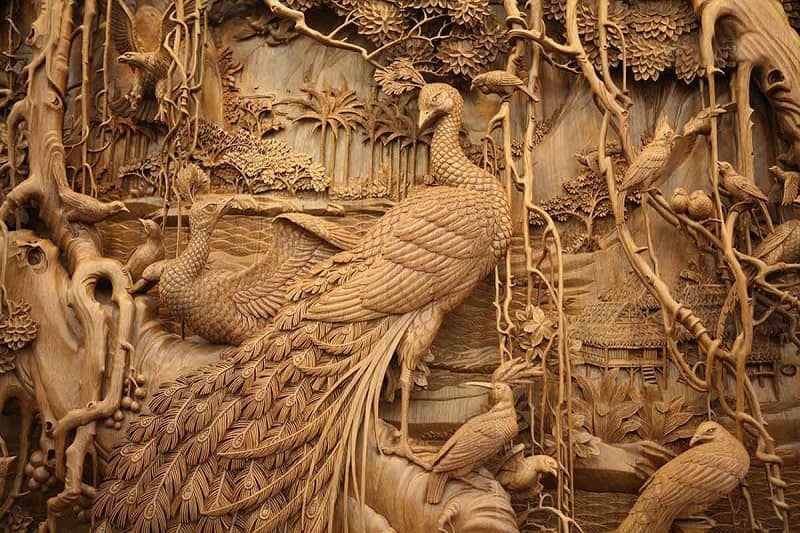
Woodcarving is another popular handicraft of Isfahan, which is made in various shapes and designs. This art, which is included in the branch of wood handicraft arts, is done by carving on wood and creating artistic heights and heights on it.
The history of carving in Iran goes back thousands of years and the works of this art can be seen on the handles of swords, spears and wooden shields of the Medes and Achaemenid armies. It is said that carving started in the city of Malair in Iran. In 2011, this city was registered as the national city of carving and the capital of furniture and carving in Iran in the list of handicraft cities of the country. Malair flower and bird inlay is one of the oldest styles of inlay in Iran. Carving is mostly used in the furniture industry; While cities like Golpayegan and Abadeh have been using this art for making decorative panels, frames and inlays for more than 800 years.




The beautiful designs and motifs in the original inlay art are Slimi, Khatai and other traditional motifs; But unfortunately, the use of these motifs is being forgotten and foreign designs have taken their place these days. In this art, the wood of different trees and plants (ebony, betel nut, beech, boxwood, jujube and walnut) are placed together in different colors so that the desired design is executed beautifully. The wood used in inlaying should be solid and without knots.
In a type of carving, instead of carving the wood background and highlighting the desired role, different woods with different natural colors are cut and placed together. In this new type of carving, they use boxwood for yellow and jujube for red.
Cities such as Golpayegan and Abadeh have been using the art of carving for more than 800 years to make decorative panels, frames, and carvings.
Miniature and painting

Painting and miniature are beautiful paintings and delicate and detailed images that were used in the distant past to depict the contents of various books, especially with literary, epic and fictional subjects. Gilding artists also designed beautiful borders with traditional motifs, and the text of the books was also written by calligraphic artists. Miniature art, whose history goes back to the era before the advent of Islam, is very prosperous in the cities of Isfahan, Shiraz, Tabriz, Qazvin and Herat. Wood, ivory, fiber and bone are usually used for painting.
Many valuable miniature works were created in Iran during many centuries, unfortunately, some of them have been lost with the coming of different kings or the attack of enemies. Today, miniatures can be seen on the sides and borders of paintings and other decorative objects decorated with inlays, calligraphy, turquoise, etc.
Calligraphy and Nastaliq is one of Isfahan's handicrafts that reached its peak during the Safavid period. Since then, many calligraphy works such as tibes, calligraphy panels and various books have been written by calligraphers.
Knotting and mesh
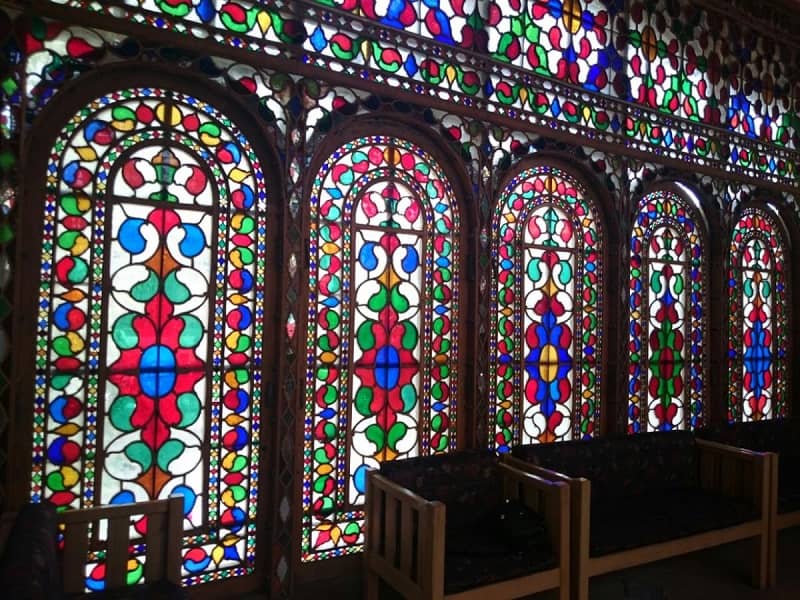
Garhchini is one of the branches of the art of architecture and traditional tiling, whose history in Iran is not well known. According to some researchers, the use of knotting and mesh art began in the period of the Abbasid caliphs and became common in Egypt and Syria until the 8th century AH, and from then on it reached Iran. The decorative geometric patterns of this art are made by putting together different tools and words based on the desired design and using tiles, bricks or other materials. In addition to architecture, this art is also used in most of Iran's traditional handicrafts, such as woodwork, carving, inlay work, metalwork, pen work on metal, pottery, and even woodwork.
The art of knotting and netting has been used in making the doors of holy places, tombs, pulpits and windows of houses and palaces and fences. Embedding colored glass in mesh wood (sash) is an example of this art that became popular from the Safobah period onwards, and Gholamreza Agha Ebrahimian can be mentioned as one of its famous masters. The motifs used in garhchini are influenced by Islamic art, mostly Islamic, and the most common pattern used in garhchini decorations is Shamseh (sun design).
Eight-feather flower pattern or Slimi pattern, circular pattern, and cross pattern are other common motifs in knotting.
Tile making
The c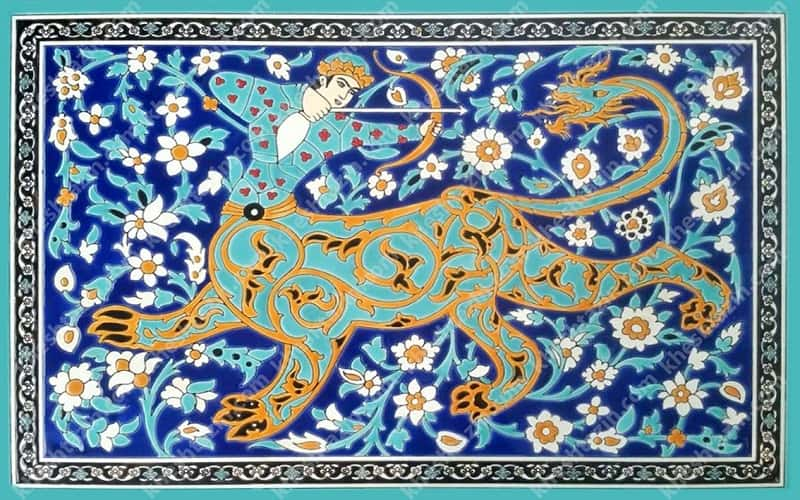 ity of Isfahan is known for its buildings with beautiful architecture and stunning views; A city that had the title of half the world in a period of history. Tile making is one of Isfahan's handicrafts. An art that dazzles the eyes of every viewer with its attractive designs and patterns, including Isfahan's seven-color tile.
ity of Isfahan is known for its buildings with beautiful architecture and stunning views; A city that had the title of half the world in a period of history. Tile making is one of Isfahan's handicrafts. An art that dazzles the eyes of every viewer with its attractive designs and patterns, including Isfahan's seven-color tile.
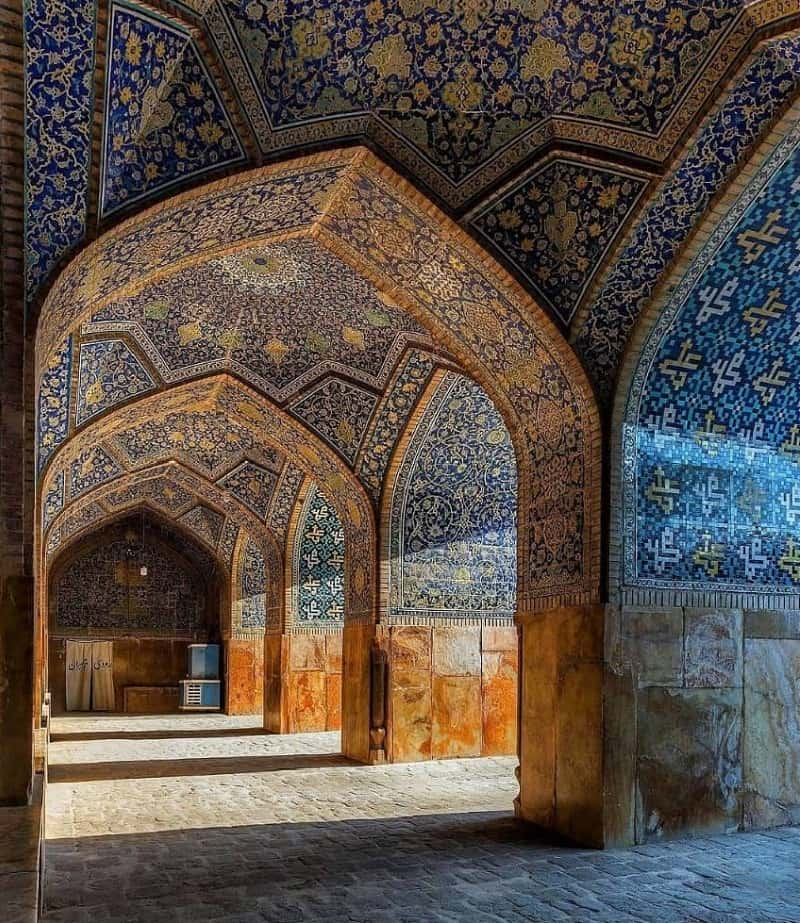
Maraq tile is another type of Esfahan tile that is very popular. Maraq means cutting pieces in different sizes and putting them together. In the production of marble tiles, small and large pieces of tiles with a special shape are put together to finally create a beautiful design; A plan that is prepared in advance by the designers and the craftsmen create the desired effect from it. For this purpose, the desired design is placed on a simple tile and then a needle is inserted on the lines of the design. In this way, the lines of the map remain in place of the needle, and by pouring charcoal round on the created holes, the desired shape and design is transferred on the tile. After the design is completed, the tile is placed in the kiln to make it strong and ready to be presented to the market.
Pottery and ceramic making
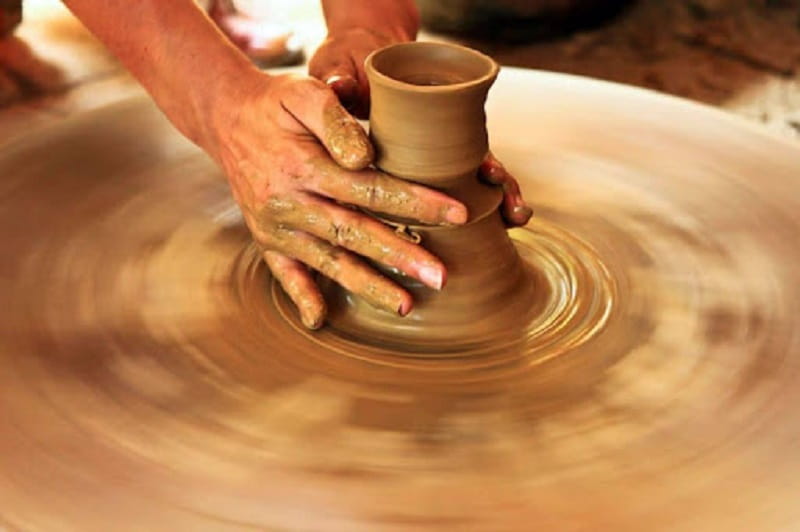
Pottery and ceramic making are flourishing in Isfahan city as well as in Natanz and Shahreza cities. The designs on Isfahani pottery and ceramics are often the designs of flowers, bushes, and fish, and iron, copper, manganese, and cobalt metal oxides are used to paint them.
Plastering
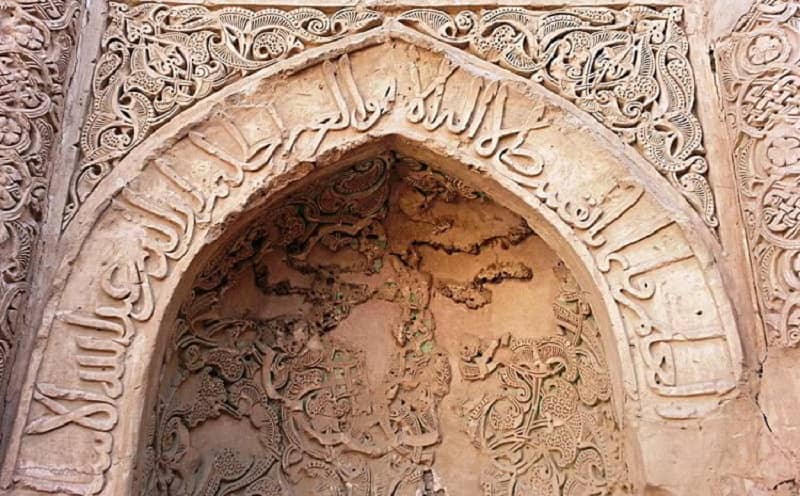
Plastering is one of the arts related to architecture, of which there are various works in different historical periods of Iran. Plaster has been widely used in decorative arts for a long time due to its malleability, adhesion, favorable color, easy application, abundance and cheapness. The peak of plaster art can be seen in the Safavid period; When the most beautiful plaster casts with various elements, especially bald and semi-bald casts with flower and plant motifs, were used to adorn the palaces of the kings of that time.
Etched
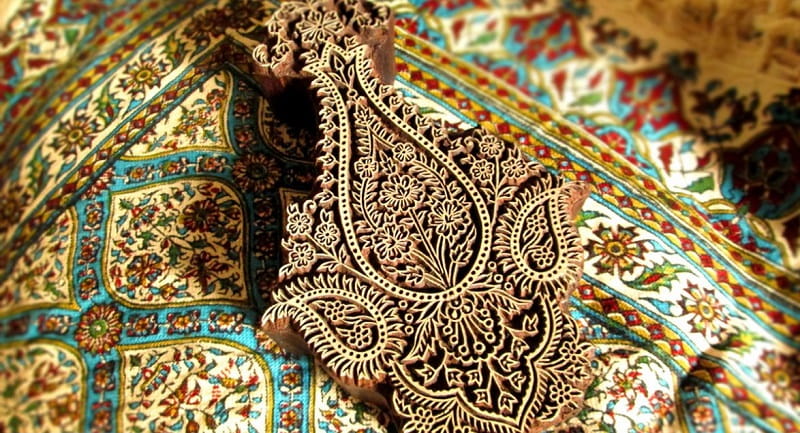
Kalamkari is one of Isfahan's textile handicrafts, which dates back to the reign of the Mongol kings. When this art was used to decorate linen, silk, cotton and chelwar clothes. The peak of penmanship was during the rule of the Safavid kings and flourished until the Qajar period. Among the themes of Qalamkar tablecloths and fabrics, we can mention traditional designs and patterns, depicting religious and epic stories, Iranian literature stories, hunting grounds, nature and animals.
Kalamkari fabrics were of special interest to the courtiers and most of their clothes were made from gold kalamkar or Aklili. At that time, there were special places to buy courtiers' clothes in the Qaisarieh market of Isfahan, and they sold Qavara cloths of Qalamkar or "Delge".
zari bafi
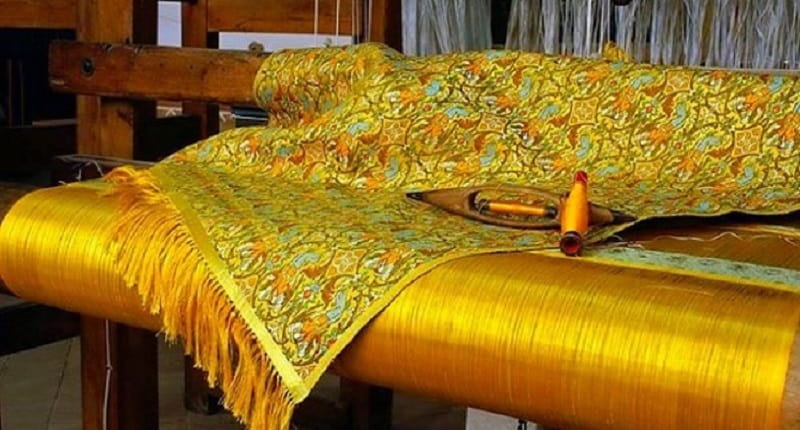
Zari means made of gold and gold; Therefore, zari refers to zari woven fabrics in which gold is used. In the art of zari-bafi, which dates back thousands of years, fabrics with traditional motifs and threads of silk and glabton are woven with completely traditional and manual machines. Mapping, threading, passing silk through warps and combs are among the stages of zari weaving. The zari weaving machine is usually wooden and is made in an old and simple style.
According to historians and researchers, the Achaemenians were pioneers in the use of delicate fabrics and luxurious clothes, and Iranian curtains woven from Gulabtun threads were famous all over the world; So that the Romans bought Iranian gold fabrics every year, and even now, Iranian gold fabrics can be seen in museums and churches in Europe.
The Romans bought Iranian gold fabrics every year, and even now Iranian gold fabrics can be seen in museums and churches in Europe.
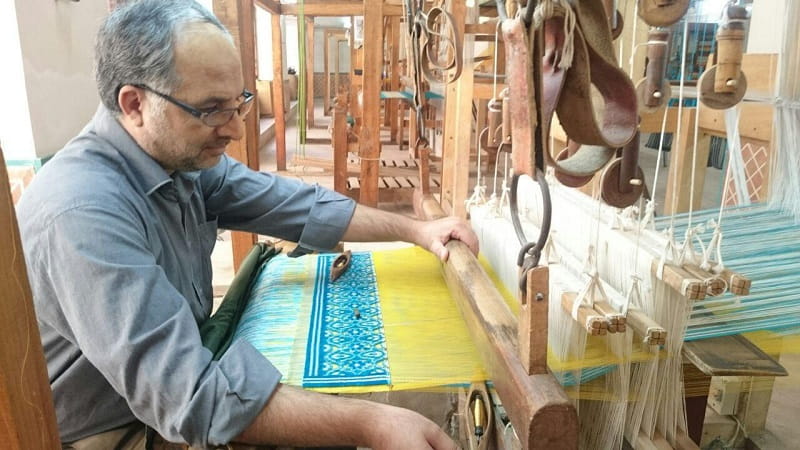
After the emergence of Islam in Iran and during the Seljuq era, Islamic motifs were combined with Sasanian motifs and the use of Kufi script on the edges of fabrics became common. Despite the decline of this art in the Mughal era, zari weaving was noticed again in the Timurid period and then the Safavid period. During the Safavid rule, many workshops in the cities of Isfahan, Yazd and Kashan were engaged in zari weaving and producing products with various colors and designs, including animals, birds, flowers and plants, trees, flowers and chickens. These zarbaft fabrics were then decorated with naskh and nastaliq lines and they were used to cover tombs and holy places.
velvet weaving
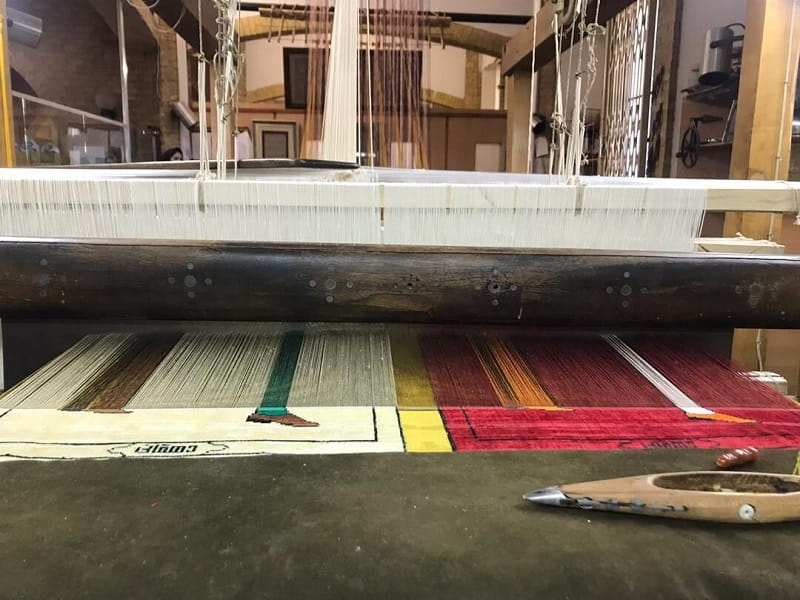

Velvet is a type of fluffy silk fabric that is woven with special precision and delicacy by the master velvet weavers of Kashan in Isfahan province. Velvet production in Kashan dates back to the distant past and pre-Islam period. After the advent of Islam, this cloth took on a religious aspect and was used to cover the Quran. Embossed flower velvet is the most beautiful type of velvet fabric.
Velvet weaving reached the peak of its fame in Iran during the Safavid era; So that the woven velvet fabrics of that time are now exhibited in prestigious museums of the world and represent Iranian art. At that time, more than 40 types of fabrics in different types and designs were woven in Kashan, and this city was the hub of the textile industry, and there were about 700 weaving machines. Unfortunately, this art began to decline from the end of the Qajar period, and with the arrival of industrial machines and the establishment of textile factories in Kashan, velvet weaving workshops were closed one after another.
Access ways to Isfahan
If you want to travel by air to Isfahan, Isfahan Shahid Beheshti International Airport will be your host. This airport, which is located outside of Isfahan city, is about half an hour away from Isfahan.
If you are one of those people who like to travel by bus, one of the 4 bus terminals in Isfahan city will be waiting for you. Of course, the pleasure of traveling by train cannot be ignored. By using the train, you will experience one of the most comfortable and carefree types of travel. Isfahan railway station near Isfahan Azadi Square will host you.
Finally, if you want to travel to Isfahan city using your own car, if you are going to Isfahan from Tehran, you can choose one of the two routes of Qom, Kashan and Shahin Shahr freeway or the old road of Tehran, Qom and Salafchegan. If you live in the west of the country and cities such as Sanandaj, Kermanshah and Ilam, the route of Hamadan, Malayer, Arak and Shahinshahr will take you to the tourist city of Isfahan, and to travel from the south of the country to Isfahan, you can take the route of Sirjan, Babak, Abadeh, Move to Reza city. If you plan to travel from the eastern cities of the country such as Birjand, you will reach Isfahan by passing through Khosuf, Tabas, Khor and Nayin.
